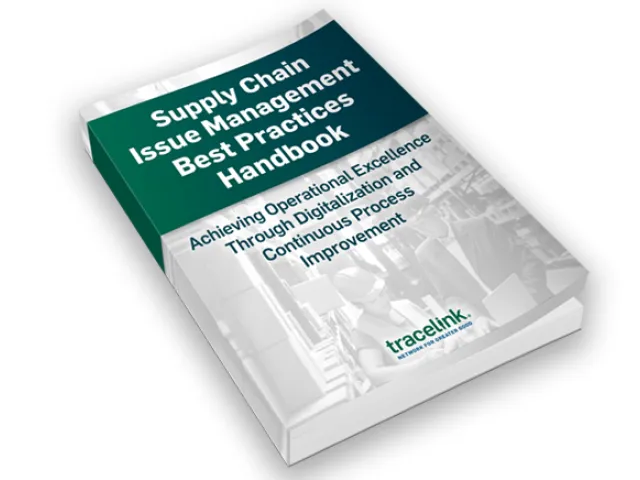Table of contents
Agile Issue Management empowers supply chain teams to react quickly and effectively to supply chain events & disruptions
TraceLink Inc., the leading digital platform company for the life science supply chain, today unveiled Agile Issue Management™, a network-based supply chain solution that enables companies to collaboratively identify, document and resolve disruptive supply chain issues to ensure the availability of critical medicines and healthcare products for commercial partners and patients.
Agile Issue Management is a collaboration platform that connects internal stakeholders to their network of external trading partners to quickly identify issues and respond to disruptions in their supply chains. By leveraging one common platform, supply chain partners can coordinate their response to issues and disruptions, greatly improving the effectiveness of the resolution process while reducing the cost of valuable personnel time. This is an important first step in building supply chain agility and resilience.
“Unplanned events and disruptions have become our ‘next normal’. Today’s process for managing supply chain issues – emails, faxes, phone calls and spreadsheets – is no longer sufficient,” said Shabbir Dahod, president and CEO, TraceLink. “By reacting immediately to issues in a structured and organized way, supply chain networks have the power to drive immediate value. We’ve seen this power first-hand, with our early adopters reducing manufacturing disruptions by over 90 percent and generating more than $100 million in annual cost savings.”
Key Capabilities of Agile Issue Management Include:
- Resolve Issues Faster. Every issue is identified, logged, and accountability assigned to ensure the right people are aware and respond immediately.
- Reduce Supply Chain Disruptions. Partners across the supply chain can identify and resolve issues early, before they become operational disruptions. Additionally, the root cause analysis capabilities allow for the early detection of systemic problems, preventing issues from reoccurring.
- Gain Visibility and Control. Leaders can use dashboards to proactively follow issues, track operational incidents, and monitor the progress of issue resolution.
- Collaborate on Change Requests and Quality Documentation. Managing change requests and quality release documentation is done in one place.



